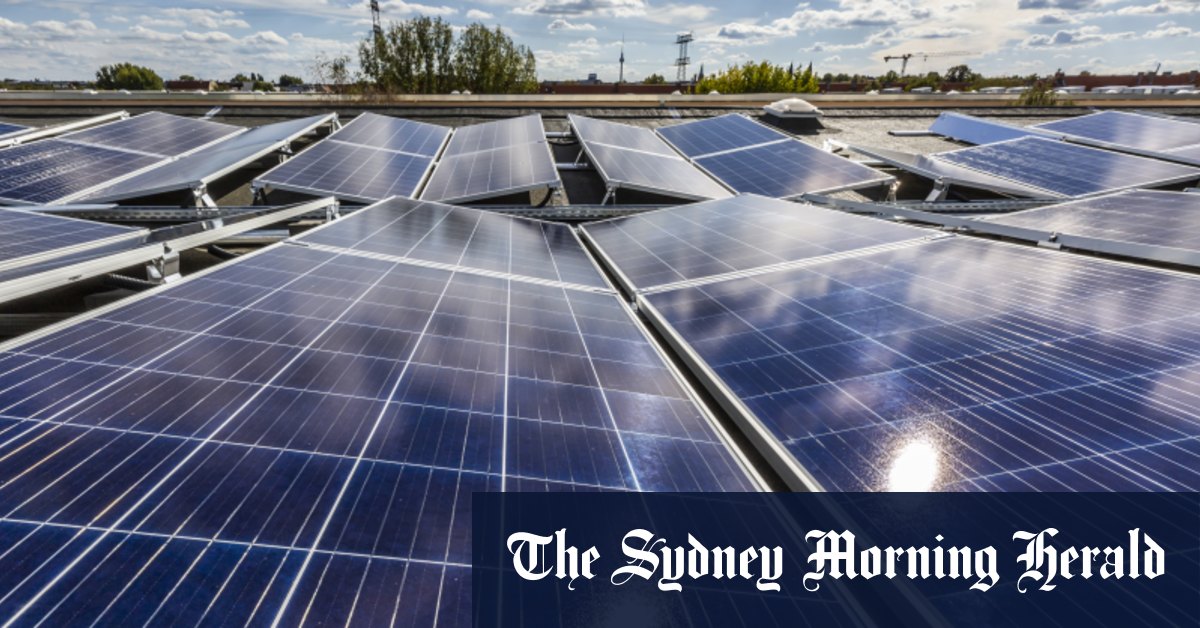Renewables held back by haphazard government policies

The NSW government’s decision to speed up approvals for a second pumped hydro power station is another sign that low-carbon technology is transforming the energy sector faster than many expected. The $1 billion pumped hydro plant supported by Alinta Energy would back up about $2 billion of renewable solar and wind energy, supplying zero-emission electricity for about 770,000 people in NSW.
Pumping water up hills during the day and then running it through turbines – such as the bigger federal-government-owned Snowy Hydro 2.0 plant due to open in the middle of this decade – effectively creates a battery that can be used to fill the gaps in intermittent wind and solar as the state’s coal-fired power plants close.
Unfortunately, the process of augmenting the energy grid to take a big increase in renewable energy is being slowed by planning delays, haphazard government intervention and the federal Coalition’s reluctance to fully embrace the possibilities of a green economy.
Last week’s federal budget surprised the energy industry by offering an $8.7 million grant to upgrade the 40-year-old Vales Point coal-fired power station on the NSW Central Coast that is expected to close in 2029.
It is a paltry sum but industry experts questioned why the federal government was subsidising a privately owned coal-fired plant without considering other options such as batteries. Rather than outlining a long-term vision for the sector, the federal government is intervening in a manner that allows it to play wedge politics against Labor but fails to offer a clear path to lower emissions or cheaper power.
The energy sector has already been confused by the federal government’s threat to use its wholly owned Snowy hydro to build a government-owned gas-fired power plant, even though private companies are quite capable of deciding what mix of power suits them. Opposition Leader Anthony Albanese in his budget reply speech took a very different approach but it also involves direct government intervention. He promised up to $20 billion of new investment into a national energy grid that could draw renewable energy from different states as fossil-fuel plants wind down.
Mr Albanese’s plan at least has the advantage that it is based on detailed work by the Australian Energy Market Operator, which has identified where interconnectors are needed to make the best use of wind and solar resources and storage. The AEMO says that, with a better grid, renewables could meet 75 per cent of electricity demand for some of the time by 2025.
Mr Albanese says that because the government can borrow almost for free in the current financial environment, the new grid could be built cheaply and would lower power prices.
Investment in this sort of infrastructure, which could help Australia comply with its Paris emissions reduction targets, makes a lot more sense than upgrading dying coal-fired plants.
But the plan, like all government intervention, creates the risk of further distorting the market. If the plan is ever implemented it should be up to the AEMO and the private sector to decide which interconnectors to build and where.
The political push for faster action on reducing emissions is growing internationally. Chinese President Xi Jinping has just committed his nation to be carbon-neutral by 2060, a huge reduction in future global emissions if he can be trusted to deliver. The International Energy Agency, a global think tank, in its annual outlook declared solar power the new “king of electricity” which was “consistently cheaper than new coal or gas-fired power plants in most countries”.
Here in NSW, Transport Minister Andrew Constance in the Herald this week said he was determined to “stop falling into the old trap of politics” and take action against climate change which he said was the “predominant cause” of last year’s tragic bushfires.
He is right but the transition to new forms of energy should be part of an integrated strategy where the government sets the course and then leaves it to the experts and the market. Otherwise, taxpayers and consumers may well end up with herds of white elephants.
Note from the Editor
The Herald editor Lisa Davies writes a weekly newsletter exclusively for subscribers. To have it delivered to your inbox, please sign up here.
Since the Herald was first published in 1831, the editorial team has believed it important to express a considered view on the issues of the day for readers, always putting the public interest first. Elsewhere, we strive to cover a diversity of views without endorsing any of them.
Most Viewed in Business
Source: Thanks smh.com